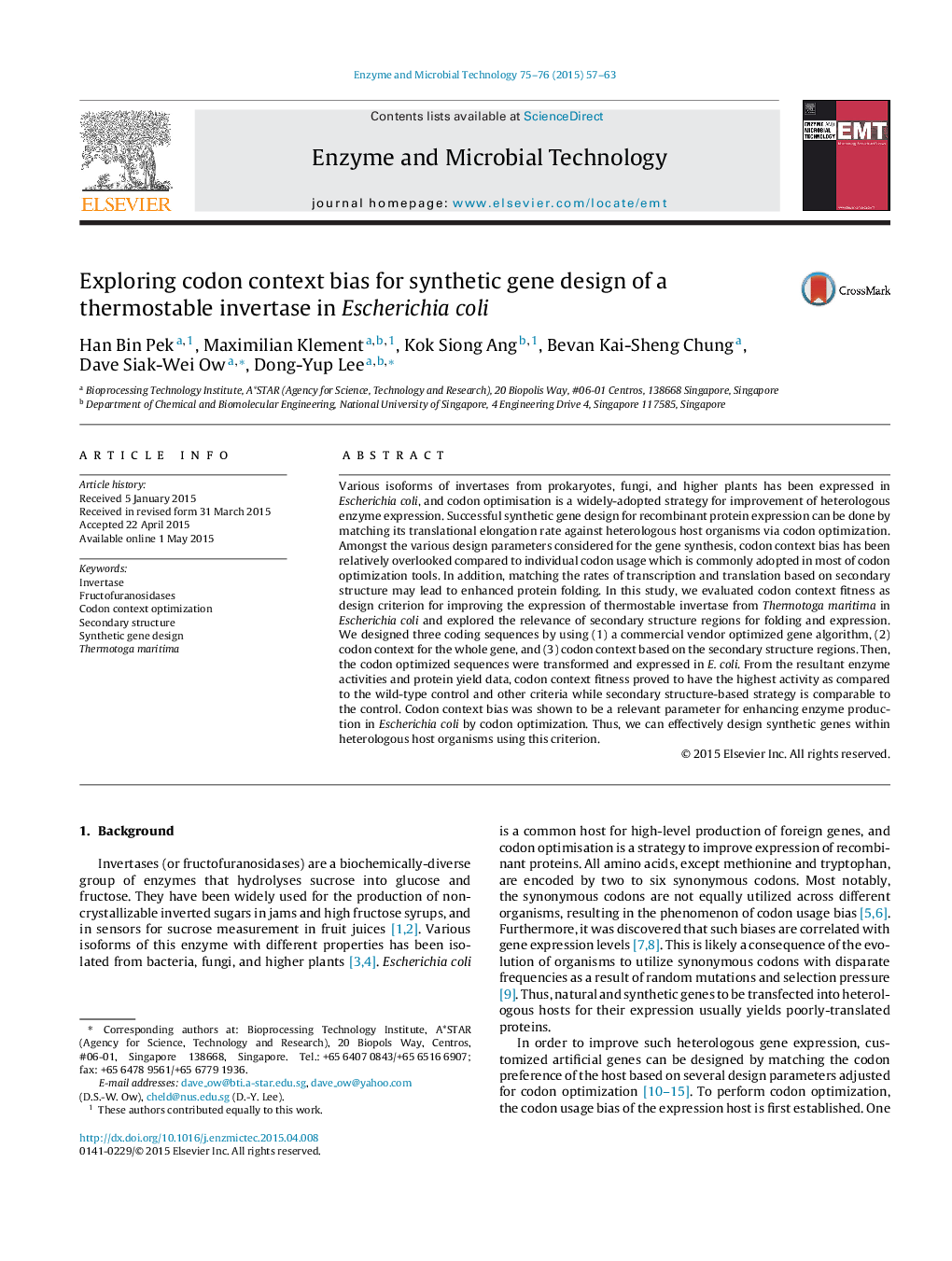| Article ID | Journal | Published Year | Pages | File Type |
|---|---|---|---|---|
| 16981 | Enzyme and Microbial Technology | 2015 | 7 Pages |
•Application of codon context fitness for heterologous enzyme expression in E. coli.•Novel design criteria of secondary structure for codon optimization in E. coli.•Increased invertase activity of 40% by codon context optimization over wild type.•Importance of codon context fitness for heterologous protein expression in E. coli.
Various isoforms of invertases from prokaryotes, fungi, and higher plants has been expressed in Escherichia coli, and codon optimisation is a widely-adopted strategy for improvement of heterologous enzyme expression. Successful synthetic gene design for recombinant protein expression can be done by matching its translational elongation rate against heterologous host organisms via codon optimization. Amongst the various design parameters considered for the gene synthesis, codon context bias has been relatively overlooked compared to individual codon usage which is commonly adopted in most of codon optimization tools. In addition, matching the rates of transcription and translation based on secondary structure may lead to enhanced protein folding. In this study, we evaluated codon context fitness as design criterion for improving the expression of thermostable invertase from Thermotoga maritima in Escherichia coli and explored the relevance of secondary structure regions for folding and expression. We designed three coding sequences by using (1) a commercial vendor optimized gene algorithm, (2) codon context for the whole gene, and (3) codon context based on the secondary structure regions. Then, the codon optimized sequences were transformed and expressed in E. coli. From the resultant enzyme activities and protein yield data, codon context fitness proved to have the highest activity as compared to the wild-type control and other criteria while secondary structure-based strategy is comparable to the control. Codon context bias was shown to be a relevant parameter for enhancing enzyme production in Escherichia coli by codon optimization. Thus, we can effectively design synthetic genes within heterologous host organisms using this criterion.
